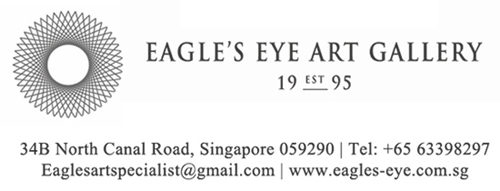If Walls Could Talk: A Dive Into Heritage

RSVP HERE
Shophouses—a source of nostalgia—rows of charming narrow units that speak to us of Asian heritage and culture more strongly than virtually any other structure.
Constructed between the 1840s and the 1960s, these shophouses are a prevalent building type weaved into the urban fabric of most historic South-East Asian cities. These buildings are a testament to our melting pot of culture in South-East Asia, evidently by the gorgeous combination of Chinese, Malay, Peranakan and European elements in its architectural designs.
In our day and age where the progressiveness of our city’s advancements and economical infrastructure brings heightened demands for more space and business districts, these very buildings that were born from the colonization of our country, survived Japanese bombardment and the horrors of World War II and bore witness to our rapid modernisation is at risk of being lost to land repurposing. How does one preserve the history and vibrancy of life that once occupied the walls of these shophouses?
Beyond the preservation of historical documentation of title deeds and photographs, paintings of heritage can record the life of an era of the past. These paintings are not uncommon amongst the myriad of collections from second generation ‘Nanyang’ painters of the 50s and 60s.
If Walls Could Talk: A Dive Into Heritage, however, aims to capture the warmth and nostalgia of a bygone era by focusing only on the stretch of buildings that people once lived in and additionally, present accurate pictorial documentation of these walls. If walls could talk, what tales would they tell?
If Walls Could Talk: A Dive Into Heritage features a collection of paintings from South-East Asian artists, W.F Lee, Lui Cheng Thak and Tung Yue Nang.
The exhibition runs from 16 August to 25 September 2021. Admission is free.
Elite Artist Profile
W.F Lee
W.F. Lee is a multi-talented artist with a cross-disciplinary vision. He wants the public to care about older buildings for their intrinsic historical value and to understand the importance of preserving the beauty of a bygone era.
Lee illustrates the grandeur that exists in historic buildings in Singapore and Malaysia. Most of these homes are pre-WW2 and are replete with ornate carvings, striking arches, comfortable porches and wood frames from nearby forests. Lee grew up in such a house. He remembers fondly when he would look up and admire his three-storey home, as well as those of his neighbours, setting the foundation for his passion.
Graduating from Kuala Lumpur College of Art in 1989. His ability with oils, watercolours (specifically made with hard-sought after pigments), pen and ink on canvas imbue his subjects with a genuine presence and an evocation of their cultural and historical past. In addition, he can be whimsical as proven by his propensity of painting in a small farm animal like a field mouse, a kitten, or his favourite rooster. Captured in time and onto his canvas as tribute, they do not disappear from our imaginations, even as modernisation sees many of them torn down. His houses are found in Singapore, KL, Penang, Ipoh, Melaka, and even Cameron Highlands.
Culture Minister, Dato’ Dr Rais Yatim, an avid art collector and lover, has chimed in, “Lee can revitalize Malaysian heritage and can change the mindset which unfortunately currently puts modern progress over heritage.” He goes on to exclaim, “Heritage is of critical importance to the citizenry as it tells the story of where we came from and our roots.”
Lui Cheng Thak
The experience of viewing the oil paintings by Lui Cheng Thak is almost similar to that of viewing those by the early European masters hung at the great galleries abroad. The main difference is perhaps the subject matter - Lui paints scenes of historical buildings, street corners and shophouses.
Receiving his formal training in fine art at the Kuala Lumpur College of Art. Lui has been a full-time painter since 1992. Lui demonstrates not only his ability to paint but also portrays a meticulous and detailed personality.
"I always paint what I feel, especially about things around me. I feel the old and historical buildings should be preserved before skyscrapers because of our rapid development and progress to replace them. These scenes make me think of the past and they bring back old memories".
Lui's artworks can be good pictorial data when the buildings make way for commercial buildings, corporate offices and shopping complexes. The paintings look alive and real with their fresh colours. His paintings have a classic look and are much influenced by the impressionist movement. His style and subject matter put Lui as one of the followers of the 60s and 70s Nanyang art movement. Lui has exhibited in many art exhibitions locally since 1989.
Tung Yue Nang
Tung Yue Nang is no novice in the Singapore art scene. His striving passion for art led him to give up a career in advertising to become a full-time artist. He has painted for many years and has travelled widely in search of new inspirations for his art. Though constantly exposed to a vast variety of cultures, he still maintains a strong rapport over his very own oriental culture and flavour.
A perfectionist, Yue Nang practices precision and fine details in his works explicitly. He experiments uninhibitedly with Western modern art. The result is a series of artworks that speaks a thousand words.
Yue Nang’s works, no matter how simple, are often filled with philosophical ideas. His distinctive style is one that builds on basic ideas working figuratively to achieve a rich and dramatic visual experience. This visual experience can no less be due to his versatility, variety and precision of techniques. He has achieved much in this region; the impressive list of exhibitions his works have appeared in is a testament to this.
